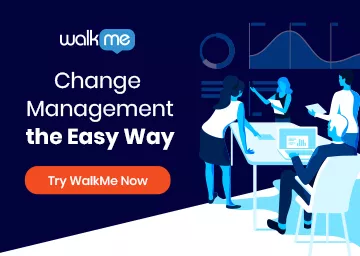 Best Change Management Frameworks in 2023" width="740" height="360" />
Best Change Management Frameworks in 2023" width="740" height="360" />  Best Change Management Frameworks in 2023" width="740" height="360" />
Best Change Management Frameworks in 2023" width="740" height="360" />
Change management frameworks are practically a requirement for any organization undergoing change.
Choosing the right framework is vital for success, whether that change is digital, cultural, or organizational.
A systematic approach to change management prevents many problems before they start.

It also offers a method for dealing with and minimizing the impact of problems that do arise.
Benefits of change management frameworks include:
The list goes on.
Table of ContentsChange management theory is a framework for helping organizations manage change effectively. It is based on the idea that change is a process, not an event, and that it requires careful planning and execution. Change management theory can be used to help organizations implement new strategies, technologies, or processes. It can also be used to help organizations deal with change that is imposed on them, such as changes in the market or the economy.
There are many different change management theories, but they all share some common elements. These elements include:
Change management theory is a valuable tool for organizations that are looking to implement change effectively. By following the principles of change management theory, organizations can increase their chances of success.
Here are some additional tips for implementing change effectively:
Change management is the process of managing organizational shifts, transitions, transformations, and changes.
As with any other business function, it is a process that needs to be systematized in order to be effective.
A framework does just that — it provides a systematic approach to managing change.
When combined with other change management tools and techniques, frameworks drastically increase the chances of success.
For decades, various business leaders have developed frameworks and processes that they use to effect organizational change.
Some are simple, some are complex.
Some are people-focused, some are process-focused.
Each framework has its strengths. And some are more appropriate than others for a given situation.
This list covers the most popular frameworks “on the market,” in no particular order.
ADKAR is one of the most well-known and widely-known frameworks, created by the founder of Prosci, Jeff Hiatt.
It advocates a bottom-up approach that begins with the individual employee and ends with organizational change.
The acronym stands for:
This model is well-established and has a track record of success.
The Lewin model was developed in the middle of the last century by Kurt Lewin, a physicist and social scientist.
It follows a 3-step process:
This approach is simpler than most of the other models mentioned here, but it is still trusted by many companies today.
McKinsey’s 7-S model is designed to help a company understand its current business structure, what needs to change, and why.
Using this model, change leaders would analyze their current business by asking questions that revolve around the “7 S’s”:
For businesses that know they need to change — but don’t know how they should change — this tool can be useful.
The Kübler-Ross change curve is based on human psychology.
More specifically, it is based on the 5 stages of human grief, developed by Elisabeth Kübler-Ross.
In recent years, this model has been applied to change management.
Since the model follows human reaction to loss and change, it has also been successfully used to understand how employees react to business changes.
The 5 stages of the Kübler-Ross model are:
This model is not a framework for effecting change, but it can be useful for understanding employee reactions.
Like the Kübler-Ross model, the Satir Change Model also follows 5 stages.
However, these stages focus on output and productivity instead of the emotions related to loss.
Its 5 stages center on how a group reacts to change. They are:
Like the previous model, the Satir model can help companies predict, understand, and adapt to employee reactions.
This model also maps out the productivity drop that occurs when people transition to a new way of doing things.
The model distinguishes between change and transition.
Change, according to the model, is when outer circumstances change, such as organizational change.
Transition refers to the inner psychological process that people go through when responding to that change.
There are 3 stages in this model:
This model is also a useful framework for understanding group dynamics and group psychology.
These 6 change management models are well-established.
From digital transformation to organizational transformation, these frameworks can be used to streamline change, decrease employee resistance, and the chances of success.
Whether you use one of these frameworks or create your own, anyone who wants to be an effective change leader must be familiar with these basic models.



WalkMe spearheaded the Digital Adoption Platform (DAP) for associations to use the maximum capacity of their advanced resources. Utilizing man-made consciousness, AI, and context-oriented direction, WalkMe adds a powerful UI layer to raise the computerized proficiency, everything being equal.

Sorry. No data so far.
Thank you! We will contact you in the near future.
Thanks for your interest, we will get back to you shortly